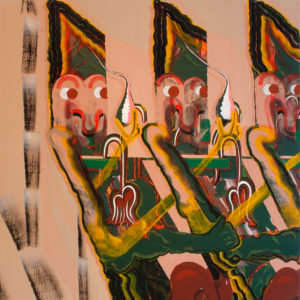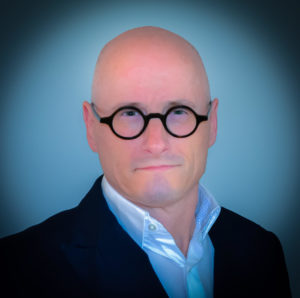
Off the Beaten Track: David Hertzberg’s Hallucinatory ‘The Wake World’ Serves Up a Sonic Feast
By Chris RuelThis month’s Off the Beaten Track explores the newly released recording of “The Wake World: A Tale for Babes and Sucklings,” a one-act opera composed by Los Angeles-based composer/librettist David Hertzberg and inspired by Aleister Crowley’s work of the same name.
The recording is the first opera released under the Tzadik label. Founder and executive producer of Tzadik, John Zorn presents the music in HD, the album recorded and mastered by Grammy Award-winning engineers Andreas Meyer and Scott Hull. Their magical work transforms a composition that’s downright hallucinatory into a sonic feast that floods the listener’s head with lush, beguiling music.
The two principal singers featured on the recording are soprano Maeve Höglund as Lola, and mezzo-soprano Samantha Hankey as the Fairy Prince, each stunning in their artistry. An additional six singers are drawn from the 16-part mixed chorus comprised of members from the Grammy Award-winning professional chamber choir The Crossing. The orchestra of five instrumentalists from the Curtis Institute of Music produced Straussian grandeur when unleashed by Opera Philadelphia Chorusmaster Elizabeth Braden.
If you’re looking for a musical head trip to while away an hour or so of quarantine time, listen to what Hertzberg and crew have conjured up within the realm of contemporary opera.
A Magical Start
Backed by Opera Philadelphia, “The Wake World” premiered in 2017 at the Barnes Foundation in Philadelphia, and in 2018 the Music Critic Association of North America’s (MCANA) bestowed its Best New Opera Award upon the work. Announcing MCANA’s award in 2018, the panel members employed such words as lurid, opium dream, and crazy to describe Hertzberg’s work.
These are perfect descriptors for an opera inspired by Aleister Crowley, the Cambridge-educated early-20th century British poet, occultist, and novelist who dabbled in recreational drug use—particularly hashish–as a means to connect with the spiritual world. Hertzberg must’ve crawled into Crowley’s hash dream while composing because “The Wake World” is far from the beaten track when it comes to opera and opera recordings.
Let’s start with Crowley, a man the press labeled a Satanist. The avid mountaineer and provocateur wrote a number of books laying the foundational tenets of Thelema, a religion that encouraged followers to practice Magick—the spelling of the word serving as a differentiator between pulling-the-rabbit-from the-hat magic and the dark arts.
Crowley’s piece “The Wake World” appeared in “Liber XCV” of “Liber AL vel Legis,” also known as “The Book of the Law,” a sacred text of Thelema.
Hertzberg encountered “The Wake World,” a few years prior to undertaking the project. To say the work is based on Crowley’s writing, wouldn’t be accurate. Hertzberg speaks of Crowley’s “The Wake World” as the seed from which the opera grew, admitting that apart from the title, little remains of Crowley’s story.
The composer/librettist found equal inspiration in the art found in Philadelphia’s Barnes collection—a museum founded by the physician, collector, and writer, Dr. Albert C. Barnes. Barnes’s collection totals over 4000 pieces with close to 200 Renoirs, and scores of paintings by Cézanne, Matisse, and Picasso.
In a video discussing the genesis of “The Wake World,” Hertzberg speaks of the aesthetic connection between the art and Crowley’s work, with Hertzberg’s vision of the characters pulled from those found in the paintings with the main character, Lola, realized from Renoir’s painting of the Henriot Family (1875).
The selection of the Barnes as the performance venue invited the audience to explore ideas—particularly those related to the formation of the self, according to Hertzberg. Audience members were not seated, rather they were free to roam room to room encountering the art while experiencing the opera—not unlike Lola follows the Fairy Prince through the spaces within her psychedelic palace.
It’s important for a listener to understand these original production aspects. Here’s why: “The Wake World” is an experiential, immersive opera. Removing it from in situ and dropping it into a recorded format removes many key elements from the work.
If you sit down with this album—and I strongly suggest you do—you need the libretto in front of you, you need to read ahead, and then close your eyes to bathe in the astonishingly creative storytelling and sonic wonderland.
Hertzberg’s “The Wake World” storyline follows the internal journey of Lola as she travels through the magical palace of her Fairy Prince where she finds awakening. Hertzberg states that the opera is “a personal vision and an attempt to render in lurid detail the strange, frightening, inarticulable mystery of the imagination, into which I poured every iota of my creative being.” Lurid, strange, wild, frightening, and weird are supreme compliments. “The Wake World” is hands-down one of the most atmospheric pieces I’ve encountered thus far. A cinematic quality reigns from the get-go.
The recording makes use of heavy reverb—sounding as if performed in a grotto. Hertzberg is most interested in sounds with the goal of creating intense encounters with the subject matter. The choir is omnipresent and drives the mood, with Hertzberg describing the chorus as orchestral in nature upon which the principals ride a sonic wave.
The opening “(somniloquy)” sets a leitmotif into motion on a river of acapella voices, casting the listener into the stream to start the mystical journey. With visuals taken out of the equation, Tzadik’s “The Wake World” recording fires the listener’s imagination, becoming a personal journey behind closed eyes.
Wagnerian Profundity of Sound with a Five-Piece Orchestra
How do you take five instruments and make them sound as profound as 120? I have no idea, but somehow Hertzberg got all the lushness and bombast of Wagner or Strauss from one horn, one trumpet, one violin, percussion, one Fender Rhodes, a piano, and 16 chorus members.
The hats have to come off to the Tzadik team. There’s a reason Andreas Meyer and Scott Hull have Grammies on their shelves for sound engineering, and “The Wake World” is a prime example of their gorgeous work. As with all performances of note, the quality of the orchestra can’t be underestimated.
The Curtis Institute instrumentalists demonstrate world-class musicianship, navigating a score that is relentless even in its more serene moments. The sonic quality of the recording is off-the-charts. This is an album for your best pair of headphones or HD sound system.
Moving beyond the technical and into the score, Hertzberg has written music that is, at times, as profound as Wagner in both the big and little moments. When the five-member orchestra opens up, (it sounds weird just writing that), the lushness rivals that of film composers who looked to Wagner and Strauss as their models–think John Williams, Hans Zimmer, or Howard Shore (who scored also scored a Ring saga).
Hertzberg infuses “The Wake World” with other-worldliness normally reserved for futuristic cinematic landscapes—sparkling and grand as well as post-apocalyptic. “Lilith Arrives, Aeons Late,” shimmers with repetitive bell tones backed by the chorus before growing, surging, and spilling out, uncontainable by the bounds of earthly reality. The listener is continually brought from grandiosity to chaos to sublimity and back around for another go.
“Is that you, my love,” shares qualities with that of lieder—albeit on a bit of acid or hashish, Crowley’s recreational drug of choice—in both word and style with the opening lines of “She’s dancing,” sung in a gravelly, monstrous shout, not unlike vocal lines spun up by the eclectic and wonderfully strange singer/songwriter Tom Waits. Hertzberg grabbed incongruent styles, perhaps said a few of Crowley’s incantations and poof! “The Wake World,” appeared, its disparate parts forming a miraculous whole.
I enjoyed the vocal performances of Höglund and Hankey. Both sang with sparkling precision whether singing longer, quieter lines or projecting, Valkyrie-like above the maelstrom. Hankey’s lush mezzo was a perfect match to the jeweled upper register of Höglund. The requirements of the music pushed both singers, demanding versatility of style and flexibility of expression. Hankey, as the Fairy Prince, sings a trouser role with Lola as the lover, layering a hint of homoeroticism to complement the overt sexuality of the libretto.
Exemplary World-Building
I’ll close out my thoughts on “The Wake World” with a look at Hertzberg’s world-building prowess.
His use of color words is phenomenal, and the manner in which he weaves the sexuality into the poetic nature and imagery is akin to passages found within the biblical book of the Song of Solomon, relating the body using images of fruit and color.
“Spilt is the juice of the peach, and flayed the flesh of the pear. And in the soft yolk, I lay reeling…” “His mouth is redder than roses, redder than the vermillion of pomegranates, than the stainéd desert cliffs whose interiors disgorge themselves out of the deep-delvéd earth;” “All carved of pale olive-colored marble, awash in lemon-colored soot.” These are but a few samples of lines that run through the libretto.
As a writer, I was in heaven reading such beautiful poetry and it inspired me to explore and look for ways to enhance my fiction with similar poetic flourishes. While Hertzberg’s world-building didn’t fully compensate for the loss of the live experience, it came very close. It is for this reason that I recommend active rather than casual listening.
To get as close to the full, immersive experience as possible, take some time to dig into “The Wake World.” It’s well worth the energy.



